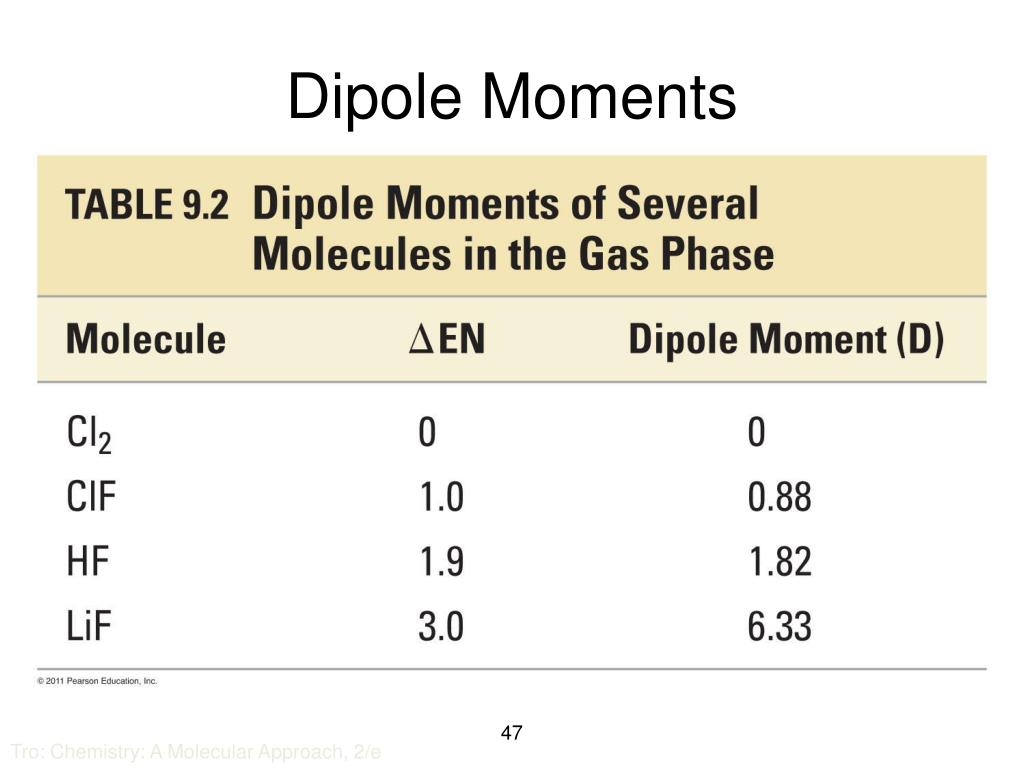
A molecule with a high dipole moment is more polar than a molecule with a low dipole moment. Dipole Moment ChemistryĪ dipole moment is a measure of the polarity of a molecule. The dipole moment formula states that the dipole moment of a molecule is equal to the product of the magnitude of the electric charge on the molecule and the distance between the charges. This will cause the two molecules to become slightly negatively charged and create a dipole moment. If we were to calculate the dipole moment, the definition of a dipole moment, symbolized by the Greek letter mu, dipole moment is equal to the magnitude of that charge, Q, times the distance between those charges, d.

For example, if two molecules are close together, the electron density of one molecule can be attracted to the electron density of the other molecule. And an electron would have a negatively charged Q, like that. In the interior of molecules, dipole moments can arise from the interactions between molecules. This will cause the two molecules to become slightly positively charged and create a dipole moment.

When two molecules interact, the electron density of one molecule can be attracted to the electron density of the other molecule. This will cause the atoms to be slightly negatively charged and create a dipole moment.ĭipole moments can also occur at the boundaries of molecules.

For example, if two atoms are bonded together by a covalent bond, the electron density will be unevenly distributed. Within a molecule, dipole moments can arise from the interactions between atoms. In general, dipole moments can exist in the following places: In chemistry dipole moment topic is concerned about bonding and happens due to difference in electronegativity(tendency to pull -ve charges ). Dipole moments can occur in a variety of different places, depending on the type of molecule.


 0 kommentar(er)
0 kommentar(er)
